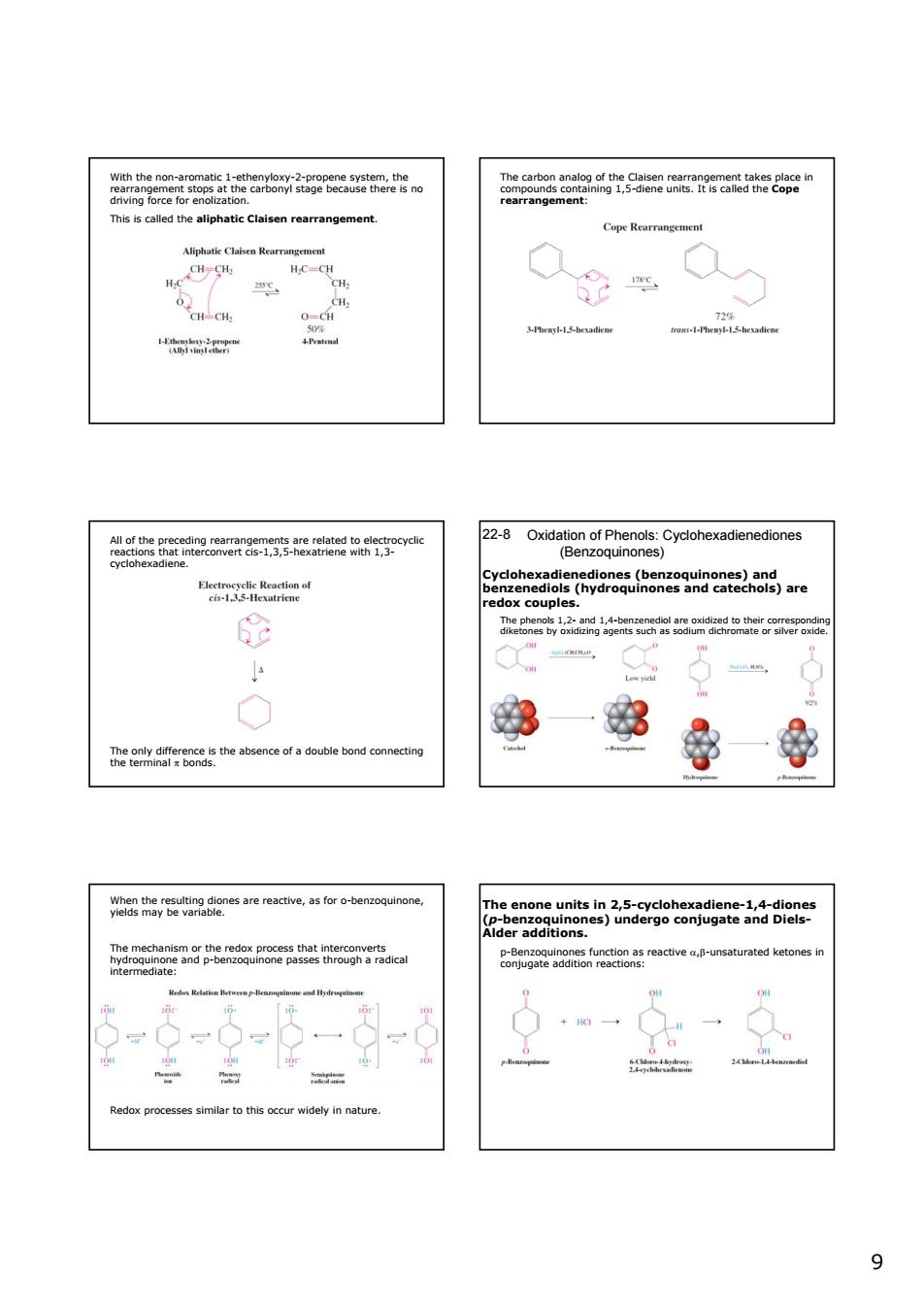正在加载图片...

品 ” hscalled the aliphatic Claisen rearrangement 2器 O 鸡一 一 yahyt2ensarmeactwe,asforo-tbemoquinone, 86eo2a2orereactivea-unsaturatedketone 一 2色 99 With the non-aromatic 1-ethenyloxy-2-propene system, the rearrangement stops at the carbonyl stage because there is no driving force for enolization. This is called the aliphatic Claisen rearrangement. The carbon analog of the Claisen rearrangement takes place in compounds containing 1,5-diene units. It is called the Cope rearrangement: All of the preceding rearrangements are related to electrocyclic reactions that interconvert cis-1,3,5-hexatriene with 1,3- cyclohexadiene. The only difference is the absence of a double bond connecting the terminal π bonds. Oxidation of Phenols: Cyclohexadienediones (Benzoquinones) 22-8 Cyclohexadienediones (benzoquinones) and benzenediols (hydroquinones and catechols) are redox couples. The phenols 1,2- and 1,4-benzenediol are oxidized to their corresponding diketones by oxidizing agents such as sodium dichromate or silver oxide. When the resulting diones are reactive, as for o-benzoquinone, yields may be variable. The mechanism or the redox process that interconverts hydroquinone and p-benzoquinone passes through a radical intermediate: Redox processes similar to this occur widely in nature. The enone units in 2,5-cyclohexadiene-1,4-diones (p-benzoquinones) undergo conjugate and DielsAlder additions. p-Benzoquinones function as reactive α,β-unsaturated ketones in conjugate addition reactions: